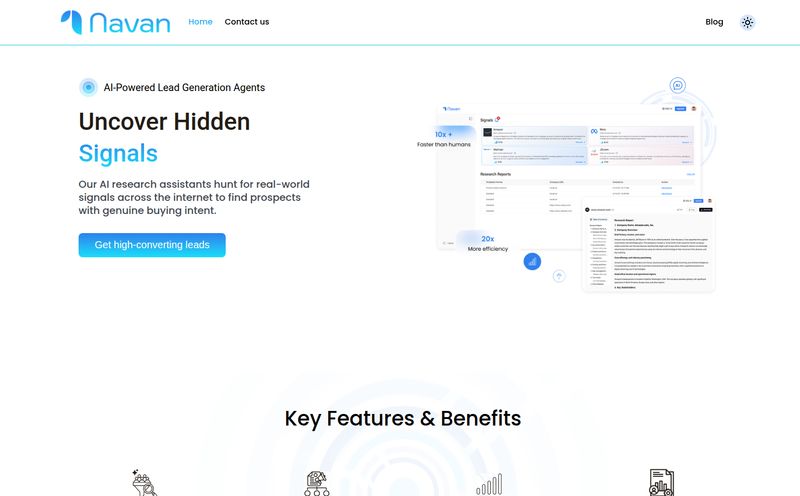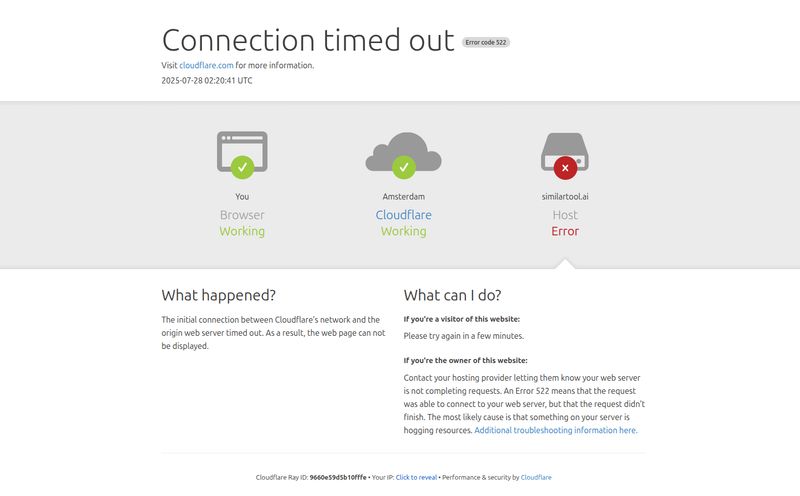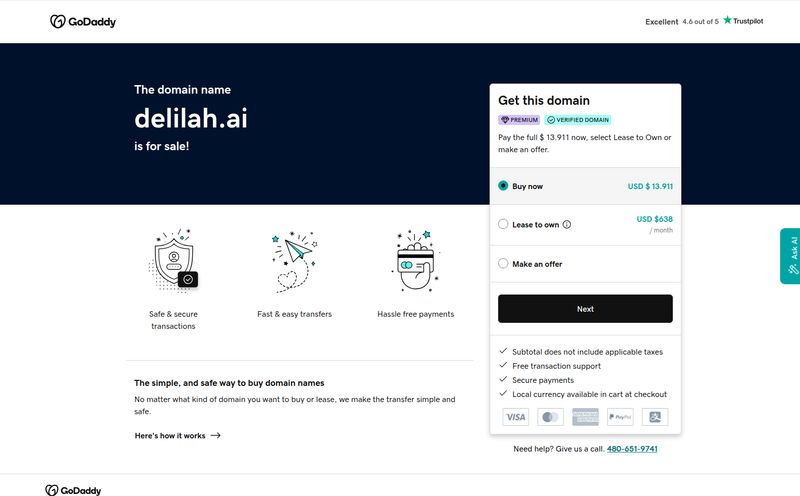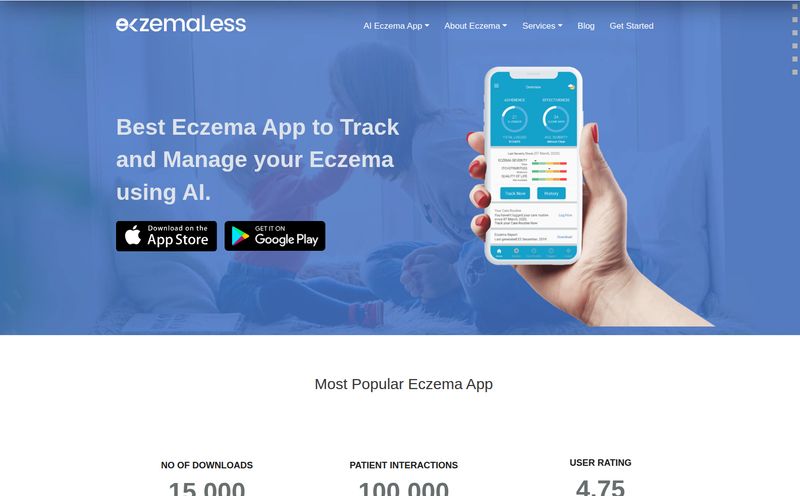If you work in any kind of industrial, manufacturing, or R&D environment, you've lived this nightmare. You're hunting for a specific document—a maintenance log from three years ago, a stress test result for a prototype part, or that one obscure PDF with the electrical schematic you know you saw somewhere. You spend hours digging through shared drives, ancient SharePoint sites, and maybe even a colleague's messy desktop. It’s a colossal waste of time and, honestly, it's just plain frustrating.
For years, we've been promised that 'enterprise search' would fix this. But most of the time, it's just a slightly better version of hitting Ctrl+F on your entire company's data hoard. It finds keywords, but it doesn't understand context. It can't read a scanned diagram or connect a planning document to a parts inventory. It’s like having a library where all the books are thrown in a giant pile. Sure, you can search for a title, but good luck finding an idea.
That's the hamster wheel a lot of us are stuck on. Which is why when I stumbled across a tool called ContextClue, my inner SEO and tech nerd perked up. It claims to be an "AI-Driven Knowledge Management" platform specifically for industrial engineering. Big words, I know. But after digging in, I think they might actually be onto something.
What Exactly is ContextClue? (And Why Should You Care?)
So, what is this thing? At its core, ContextClue is an AI tool designed to read, understand, and synthesize all of your company's scattered information. Think of it less like a search engine and more like a hyper-intelligent research assistant who has already read every single document, spreadsheet, and PDF your company has ever produced. And not just read them, but understood them.
It's built by the folks at Addteq.io, who have a serious reputation in the enterprise world (they're a top Atlassian Gold Partner). This isn't some fly-by-night startup. They're used to dealing with the complex, messy reality of large organizations. And that background shows in how ContextClue is designed.
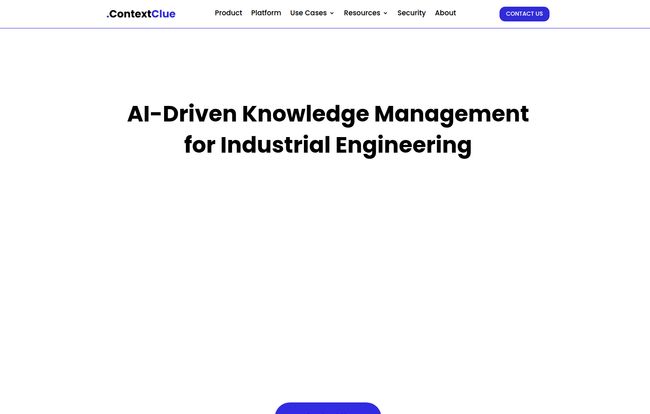
Visit Context Clue
It's not just for text files. We're talking scanned documents, complex PDFs with diagrams, numerical data in spreadsheets, you name it. The goal is to break down the walls between different data types and create one single source of truth that you can actually talk to.
The Core Problem ContextClue Aims to Solve
ContextClue is built to tackle the demons that haunt every engineering and manufacturing firm. You know them well. There's the demon of siloed knowledge, where the design team's insights never make it to the maintenance crew. There's the demon of outdated information, where someone uses an old spec sheet, leading to costly rework. And the biggest, ugliest demon of all: unstructured data.
This last one is the real killer. It's the mountain of scanned service reports, handwritten notes from site visits, and complex technical drawings. Traditional search tools look at that stuff and just give up. It's digital garbage to them. ContextClue is designed to be a data archaeologist, digging through that 'garbage' to find the treasure buried within. It connects the dots that no human could possibly see on their own, simply because of the sheer volume of it all.
How It Works: The Ingest, Retrieve, Generate Flywheel
The platform is built on a pretty elegant three-part system. I like to think of it as the ultimate librarian for your business.
1. Ingest Module (The All-Knowing Intake)
First, you have to feed the beast. The Ingest module is where ContextClue connects to all your data sources. We're talking your cloud storage, local servers, databases, SharePoint... wherever your information lives. It pulls all of this data in, using AI to read and categorize everything, including the content of those pesky scanned PDFs. This is the foundational step—getting all the books into the library.
2. Retrieve Module (The Semantic Search Genius)
This is where the magic happens and where it leaves old-school search in the dust. The Retrieve module uses LLM-driven semantic search. That's a fancy way of saying it understands meaning, not just keywords. You can ask it questions in normal, everyday language. Instead of searching for "part_#AX123_report_2022," you can ask, "What were the common failure modes for part #AX123 in the last two years based on maintenance reports?" It will understand the question, find the relevant documents (even if they don't contain those exact words), and give you a direct answer. It's a game-changer.
3. Generate Module (The On-Demand Analyst)
This is the part that gets me really excited. ContextClue doesn't just find information; it helps you create new things with it. The Generate module can synthesize the data it finds into brand new, structured outputs. Need a summary of all R&D projects related to improving battery life? Done. Need it to write an SQL query to pull sales data for a specific component? It can do that. It can even help generate entirely new documents, like a standard operating procedure, by pulling best practices from dozens of past reports. This turns your static archive of data into an active, productive asset.
A Closer Look at the Killer Features
Drilling down a bit, a few features really stand out for the intended industrial audience.
Beyond Simple Search with Semantic AI
I've touched on this, but it’s worth repeating. This isn't just about convenience. For an engineer, finding the right information can be a matter of safety and quality. Being able to ask contextual questions like, "Show me all materials that have failed under 500°C in thermal testing" and getting a real answer from a dozen different test reports is incredibly powerful.
Automated Reporting That Doesn't Suck
I've yet to meet an engineer who enjoys compiling weekly or monthly progress reports. It's a soul-crushing task of copy-pasting from ten different sources. ContextClue's report generation feature automates this. You can set up templates that pull the latest data from project management tools, test results, and team chats to generate a coherent report in minutes. More time engineering, less time wrestling with PowerPoint.
On-Premise Deployment: Why This is a Huge Deal
Okay, this is probably the most important feature for any company concerned with intellectual property. The rise of cloud AI has been amazing, but sending your sensitive, proprietary engineering designs and R&D data to a third-party server? That's a non-starter for many. ContextClue offers on-premise and hybrid deployment options. This means the entire system can run on your own servers, behind your own firewall. Your data never leaves your control. For industries like defense, aerospace, and pharma, this isn't a nice-to-have; it's a requirement.
The Good and The... Slightly Technical
No tool is perfect, right? So let's look at the upsides and the potential bumps in the road.
The advantages are pretty clear: You get incredible accuracy and consistency in your information retrieval. The system is scalable, so it can grow with your data hoard. And as I just mentioned, the on-premise security is a massive win. It also integrates with tools you already use, like Slack and Microsoft Teams, so it can fit into your existing workflows. A huge plus is its ability to work with various LLMs, including more cost-effective open-source models.
On the flip side, the setup isn't exactly a one-click affair. If you choose to integrate an open-source Large Language Model, expect it to take a few hours of technical work. If you're using a commercial LLM like one from OpenAI or Anthropic, you'll need to have your API keys ready. These aren't deal-breakers by any means, they're just part of implementing a serious, enterprise-grade system. It’s a small price to pay for the level of customisation and security you get.
What About the Price?
This is the part where you scroll down the page looking for the pricing table and... you won't find one. Like most enterprise-grade, highly customizable software, ContextClue doesn't have a public pricing list. And that makes sense.
The cost will depend entirely on your needs. How much data do you have? Which modules do you need? Are you deploying on the cloud or on your own hardware? The answer is, you have to talk to them. They'll give you a demo and work up a quote based on the specific solution you require. Don't see this as a red flag; see it as a sign you're not buying a one-size-fits-all product.
So, Who is ContextClue Actually For?
After all this, it’s pretty clear who stands to benefit the most. If you're a small team with all your data neatly organized in Google Drive, this is probably overkill. But if you're in one of these boats, you should be paying attention:
- Manufacturing and Industrial Firms: Especially those dealing with complex parts planning, maintenance schedules, and quality control documentation.
- R&D Departments: Teams that need to synthesize information from thousands of research papers, patents, and internal test results.
- Large Engineering Corporations: Companies that have decades of project knowledge locked away in various formats and need to make it accessible to a new generation of engineers.
- Any organization terrified of losing "tribal knowledge" when a senior expert retires.
In short, if your organization's greatest asset is its collective knowledge, but that asset is currently locked in a digital dungeon, ContextClue might just be the key.
The Final Word
Look, I see a lot of tools that promise to revolutionize work with AI. Most are just thin wrappers around a generic API. ContextClue feels different. It's a tool built with a deep understanding of a specific, painful problem in a high-stakes industry. It's not just about finding files faster. It’s about transforming a chaotic archive into an intelligent, interactive knowledge base that can actively help you solve problems.
It’s an ambitious goal, but from what I've seen, they have the technical chops and the industry focus to pull it off. It might just be the tool that finally puts an end to the soul-crushing hunt for that one, single, all-important document.
Frequently Asked Questions
- 1. What is ContextClue in simple terms?
- ContextClue is an advanced AI tool for businesses, especially in engineering and manufacturing. It reads and understands all your company documents (text, PDFs, etc.) so you can ask it complex questions in plain English and get synthesized answers, reports, and data analysis.
- 2. Can ContextClue handle scanned documents or PDFs with images?
- Yes. A core part of its Ingest module is the ability to process scanned documents using Optical Character Recognition (OCR) and other AI techniques to extract text and contextual information, making them fully searchable.
- 3. Is ContextClue secure for our company's secret designs and data?
- Absolutely. This is one of its biggest selling points. It offers on-premise and hybrid deployment, meaning the software and your data can live on your own servers, completely under your control, ensuring maximum security and confidentiality.
- 4. What kind of AI models or LLMs does it use?
- It's flexible. It can integrate with leading commercial LLMs (via API) or with open-source models. This allows companies to choose the model that best fits their budget, performance, and security requirements.
- 5. What other software does ContextClue integrate with?
- It's designed to fit into your existing workflow, with integrations for popular collaboration tools like Slack and Microsoft Teams, as well as various data storage solutions where your documents reside.
- 6. How can I find out the pricing for ContextClue?
- There is no public pricing. Because it's a customizable enterprise solution, you'll need to contact the ContextClue team directly for a live demo and a quote based on your organization's specific needs and scale.
Reference and Sources
- ContextClue Official Website
- Addteq.io - The Developers of ContextClue
- The Challenge of Knowledge Management in Modern Manufacturing (IndustryWeek)
